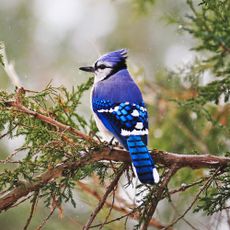Heat Tolerant Plants For South-Facing Walls


If you are planning to garden against a south-facing wall in a warm climate, be sure to choose plants that will tolerate the extra heat generated in that location. Brick or masonry walls, especially, can churn out the heat. Soils will dry out quickly, so it’s important to keep the plants watered and mulched well.
Here are plants for a south-facing wall that can withstand summer’s heat.
Heat Tolerant Plants for South-Facing Wall
Plants for hot walls need to be tough, drought tolerant plants that can withstand full sun. Succulents, such as agave, aloe, yucca, bromeliad, and cactus, are some of the best plants for hot locations in the landscape. They love full sun and hardly need any water. They do require well-draining soil, however.
There are many benefits to planting a green wall (where plants are growing on a vertical structure). For example, vines along an exterior wall can cool the wall, reducing indoor cooling costs. Additional benefits of a green wall include:
- It covers an unattractive wall space
- Creates a layer of insultation on building sides
- Reduces traffic and noise pollution
- Creates additional wildlife habitat
Other plants besides vines can be used for a green wall. Freestanding structures with modular units can accommodate several plants.
Whether you are planting shrubs, vines, annuals or perennials, the following plants should perform well.
Shrubs for south-facing wall:
- Abelia, Glossy (Abelia x grandiflora)
- Althea or Rose of Sharon, (Hibiscus syriacus)
- Beautyberry (Callicarpa americana)
- Bluebeard or Blue-mist shrub (Caryopteris x clandonensis)
- Desert-willow (Chilopsis linearis)
- Holly, Chinese (Ilex cornuta)
- Holly, Yaupon (Ilex vomotoria)
- Indian Hawthorn (Rhaphiolepis spp.)
- Juniper (Juniperus spp.)
- Nandina or Heavenly Bamboo (Nandina domestica)
- Rose, rugosa (Rosa rugosa)
Perennials for south-facing wall:
- Autumn sage (Salvia greggii)
- Blanket flower (Gaillardia pulchella)
- Blazing star (Liatris spicata)
- Blue-eyed grass (Sisyrinchium atlanticum)
- Clover (Clover spp.)
- Coreopsis (Coreopsis grandiflora)
- Painted daisy (Tanacetum coccineum)
- Purple coneflower (Echinacea purpurea)
- Red salvia (Salvia coccinea)
- Red yucca (Hesperaloe parviflora)
Annuals for south-facing wall:
- Cockscomb (Celosia cristata)
- Gazania (G. rigens)
- Melampodium (M. divaricatum)
- Moss Rose (Portulaca grandiflora)
- Ornamental pepper (Capsicum annuum)
- Poppies (Papaver spp.)
- Spider Flower (Cleome hasslerana)
- Strawflower (Xerochrysum bracteatum)
- Vinca (Catharanthus roseus)
- Zinnia (Zinnia spp.)
Heat tolerant climbing vines:
- Bougainvillea (B. spectabilis)
- Clematis (Clematis spp.)
- Confederate jasmine (Trachelospermum jasminoides)
- Coral honeysuckle (Lonicera sempervirens)
- Crossvine (Bignonia capreolata)
- Evergreen wisteria, (Callerya reticulata)
- Grape (Vitis species)
- Lady Banks climbing rose (Rosa banksiae)
- Maypop (Passiflora incarnata)
- Morning glory (Ipomoea spp.)
- Native clematis (Clematis virginiana)
- Rose of Montana (Antigonon leptopus)
- Smilax (Smilax spp.)
- Virginia creeper (Parthenocissus virginicus)
- Yellow jasmine (Gelsemium sempervirens)
Gardening tips, videos, info and more delivered right to your inbox!
Sign up for the Gardening Know How newsletter today and receive a free download of our DIY eBook "Bring Your Garden Indoors: 13 DIY Projects For Fall And Winter".

After graduating from Oklahoma State University with a degree in English, Susan pursued a career in communications. In addition, she wrote garden articles for magazines and authored a newspaper gardening column for many years. She contributed South-Central regional gardening columns for four years to Lowes.com. While living in Oklahoma, she served as a master gardener for 17 years.
-
 What The First Bird You See On January 1st Means For Your Year Ahead
What The First Bird You See On January 1st Means For Your Year AheadAccording to birding lore, whether you spot a vibrant cardinal or an ominous crow on New Year's Day impacts your life for the next 12 months.
By Melanie Griffiths
-
 The 7 Best Botanical Gardens In The US
The 7 Best Botanical Gardens In The USHow many have you been to?
By Teo Spengler